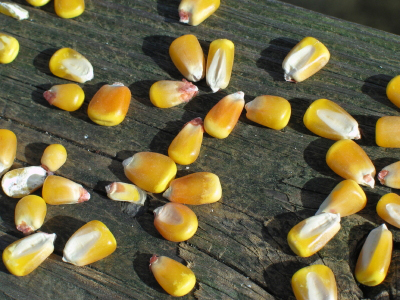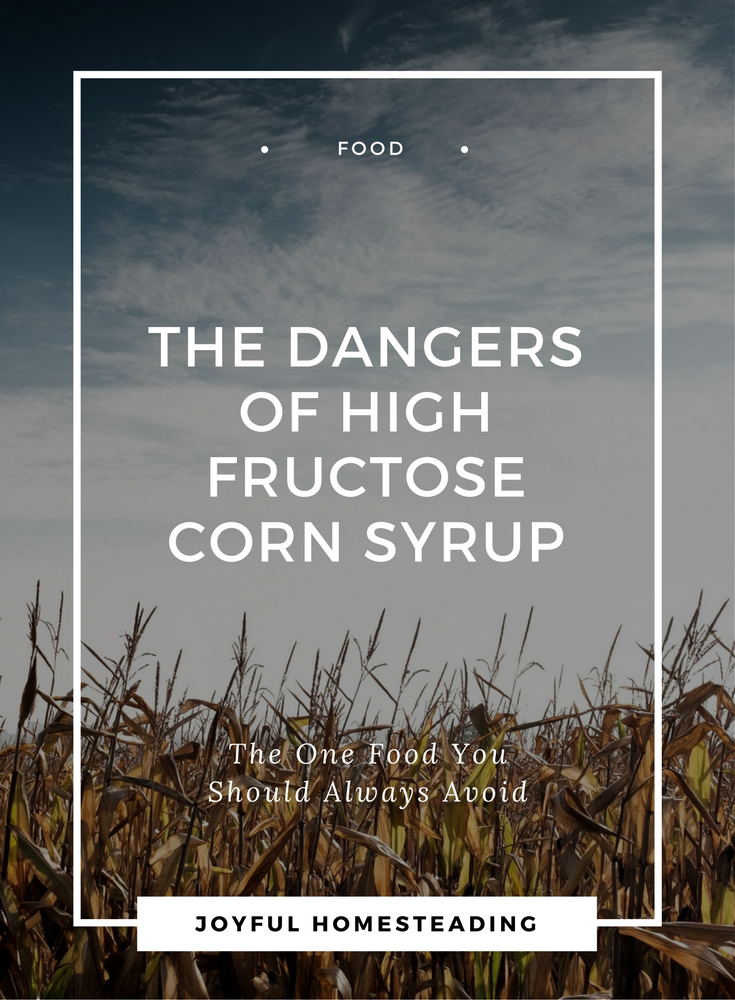High Fructose Corn Syrup Dangers
High fructose corn syrup dangers are big reasons why you should be cooking from scratch as much as possible and pursuing a simpler and healthier diet.

Self-reliance means being responsible for our own health, and one of the best ways to improve our health is through healthy eating.

The Story Behind
High Fructose Corn Syrup
Until the 1970s, commercially-made cakes, cookies, candies and sodas were sweetened with sugar that was mostly imported from the tropics where sugar cane grows. But then high fructose corn syrup was invented.
Add chemicals to a corn mash and voila! You have a far cheaper sweetener. American growers realized a new way to sell corn and crowd out the tropical sugar producers, and food manufacturers found a way to cut their costs and increase profits.
Soon everyone was jumping on the bandwagon, with the annual intake of high fructose corn syrup increasing by a whopping one thousand percent between 1970 and 1990. The average American now takes in more high fructose corn syrup than he does any other member of the food groups, thus increasing the high fructose corn syrup dangers associated with this sweetener.
So What's Wrong with It?
After all, it's only corn, right? But anything that is concocted chemically doesn't go down well when we eat it. Our bodies are made to process food, not chemicals.
High Fructose Corn Syrup Dangers
One of the most prevalent high fructose corn syrup dangers is obesity. If you are overweight, the culprit is less likely an issue of self-control, but rather the types of food you are eating.
Obesity wasn't really a problem in this country before the 1970s. But after the introduction of high fructose corn syrup, the obesity rates began to skyrocket. Now even children are suffering from obesity. Granted, some of that is the result of a lack of exercise, but the quality of our diet has a major role in weight gain.
Before the 1970s, when people ate cake, pie, or candy, it was sweetened with ordinary table sugar, a simple glucose, and a source of ready energy. While you certainly shouldn't have a steady diet of table sugar, at least your body can quickly convert it into energy and store what it doesn't need in the liver for later use.
But fructose is different from glucose. It floods the liver with sugar and is quickly converted into fat, giving our bodies less time to convert it into energy. Fructose wasn't as much of a problem in the past when most people consumed no more than 15 grams, or about one-half of an ounce of fructose per day, most of it coming from fruits and vegetables.
But thanks to the introduction of high fructose corn syrup, many people are consuming more than 81 grams of fructose daily, oftentimes without even realizing they are eating it. This sweetener is in virtually everything processed, including frozen meals and bread.
Also with fructose, you don't feel full as quickly, so you tend to eat more and gain weight. Consuming this unhealthy sweetener can lead to fatty liver disease. High fructose corn syrup dangers also include uric acid formation, leading to gout and decreased kidney function, an increased risk of diabetes, hypertension and atherosclerosis.
High Fructose Corn Syrup
Is Everywhere
It would probably be easier to list the foods that don't have high fructose corn syrup than list all of the high fructose corn syrup foods currently on the market.
Unless the packaging says otherwise, expect virtually every prepared food you buy from the store to contain high fructose corn syrup. That's because this unhealthy syrup gives breads a nice brown color and soft texture and makes frozen meals more appealing.
The only way to be certain that you're not getting high fructose corn syrup is to check the list of ingredients, or better still, cook everything from scratch.










New! Comments
Have your say about what you just read! Leave me a comment in the box below.